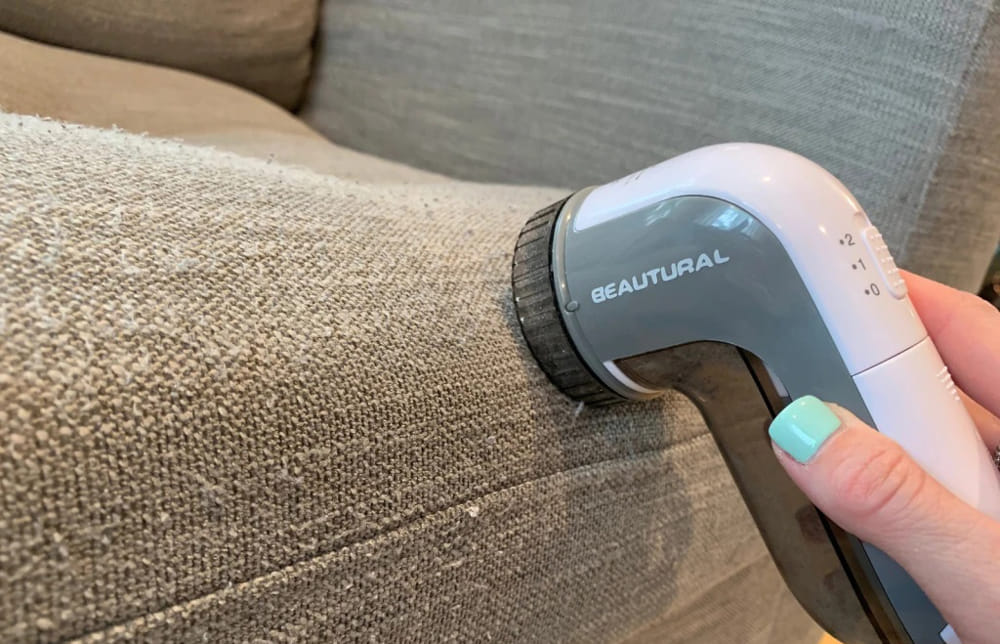
People who are decorating their homes often wonder about the fabric of their sofa. Generally, the fabric is a great way to add color and texture to your home. The downside is that it can be hard to maintain and can wear down quickly.
The most common reason for pilling on upholstery is due to the fabric being too close to an edge or corner. If you have a pet in your home, they may also contribute to the pilling as they rub against the fabric while trying to get comfortable.
How do you stop your couch from pilling?
You can also use a pumice stone pill remover or pill comb to manually brush away fabric pills. Pilling may reappear several times. When it does, simply shave it off again. Your fabric will stop pilling after all of the loose fibers have been removed.[1]
Is pilling on a sofa normal?
Pilling is considered normal in fabric; it is not considered a fault and is not a sign of poor quality or inferior fabric. It can be successfully and easily removed using a battery-operated de-pilling device. De-pilling only removes surface fibres and does not affect fabric performance.[2]
What does pilling on a couch mean?
Pilling is known as loose strands or balls of fiber that form on the face of a piece of fabric. It is caused by abrasion on the surface of the fabric, and can be considered an unsightly occurrence on furniture.[3]
What kind of sofa fabric does not pill?
If you prefer avoiding pilling altogether, go for all natural materials, such as pure wool, or textiles made from long fibers, such as silk or linen upholstery fabrics. Tightly woven microsuedes and denims rarely seem to pill.[4]
How do you fix pilling on fabric?
You can remove pills, lint or fuzz from clothes by using a fabric comb or battery-operated pill/lint remover. Both of these methods help carefully cut or scrape away the fabric pills. This is also how to get fuzz and pills off sweaters which can show up on this loose fabric even after the most careful washing.[5]
Why is my brand new couch pilling?
The loose additive fibers within the fabric have a natural tendency to move towards the surface of a piece of fabric when subject to rubbing and friction. The friction causes the excess fibers to twist together into small balls but is still secured to the material. These balls are what we recognize as pilling.[6]
How do you Defuzz a couch?
One of the best ways to get rid of pills and fuzz is to invest in a battery-operated pill shaver. A pill (or fabric) shaver is super easy to use; all you have to do is slowly run the device over your couch using back-and-forth motions, and it takes off all the pilling and fuzz.[7]
Can I use a fabric shaver on my couch?
Freshen up your couch cushions by removing couch fuzz. The easiest way to do this is with a fabric shaver.[8]
Does pilling eventually stop?
It is possible, but do know that all fabrics will pill at least a little bit during their lifetime. However, there are some textiles that are less likely to pill.[9]
What causes material to pill?
Pills form when short fibers in a material come loose, get tangled, and form tiny balls of yarn at the end of the fiber. The main cause of pilling is rubbing, which occurs most often during wear and in the wash.[10]
Does polyester couch pill?
Usually, 100 percent polyester fabrics will not pill, will not stretch, it is resistant to stain, mildew, fungi and even bugs. When used on a couch or sofa, 100% polyester it can provide a highly durable comfort experience.[11]
How long should couches last?
Sofas: Consider replacing your sofa before the seats start sagging to the point of not supporting you, the fabric has become stained and worn, and the frame is breaking down or squeaking. How long should a couch last? On average, a typical sofa lasts between 7 and 15 years.[12]
